11 Kids’ Cartoons Based on Inappropriate Horror Properties
If we stop and think about the fun cartoons of our childhood, we discover that many had... unusual influences
This article comes from Den of Geek UK.
Most of us don’t associate kids’ cartoons with the horror genre. Childhood is supposed to be a time of innocence after all, and horror’s heart belongs to darkness. But throughout the years, cartoons and the horror genre have been frequent bedfellows, and animated works featuring ghosts, ghouls, and monsters can be traced back to the early days of the medium.
Making fright fare for younger viewers is necessary. As children, our imaginations were more active and our curiosity was strong. We wanted to learn about the world, but as we began to discover that life wasn’t all teddy bears and candy bars, watching horror-tinged cartoons gave us a safe space to explore our inner fears. Sometimes, though, they just catered to our inner burgeoning geeks who were developing a fascination with the fantastical. At the end of the day, those of us who fall in love with horror do so because we think it’s cool.
If we had to list all the horror-themed cartoons aimed at young viewers we’d be here forever. That’s an endless rabbit hole right there. However, cartoons based on horror movies children shouldn’t be watching is a smaller medium, but you might be surprised to find how many there are out there, just waiting to be rediscovered.
Attack Of The Killer Tomatoes (1990-1991)
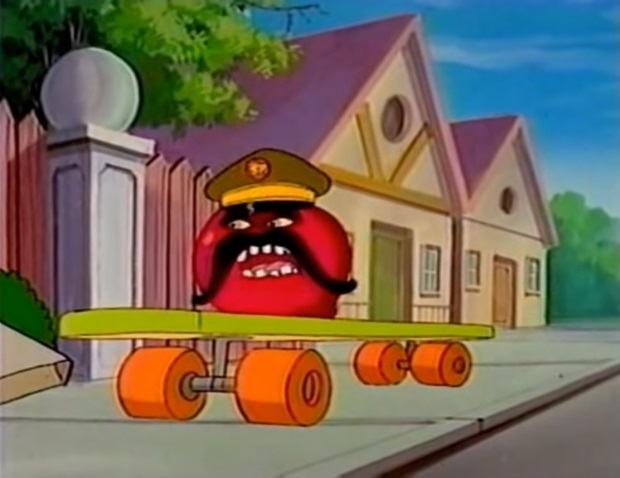
Based On: Attack Of The Killer Tomatoes!, Return Of The Killer Tomatoes!
Children don’t like eating healthily, so imagine how convenient early 90s kids must have found the cartoon iteration of Attack Of The Killer Tomatoes. Not only did the show provide them with entertaining television, but by depicting tomatoes as apocalyptic harbingers, they had more ammunition against their parents to avoid eating this particular fruit.
Of course, the decision to make a cartoon series inspired by a monster movie spoof about rampaging tomatoes was a bold one. However, after the surprising success of 1988 sequel Return Of The Killer Tomatoes, the decision to rebrand the goofy saga as a children’s cartoon seemed like a good idea at the time.
further reading: The Animated Spinoffs That Rebooted 90s Movies
The show’s premise is similar to Return Of The Killer Tomatoes. Picking up five years after the events of the original film, tomatoes have been outlawed, but a mad scientist named Dr. T. Putrid Gangreen, hellbent on world domination, creates a new master species to do his bidding. Chaos ensues as tomatoes – including humanoid and piranha versions of the berry – set out to conquer humanity. It is then up to a band of heroes led by a ten-year-old pizza boy to save the world from the unwelcome invaders.
Attack Of The Killer Tomatoes lasted for two seasons as part of Fox’s Saturday morning cartoon slate before its cancellation. What’s more surprising, though, is just how enjoyable the series was. The self-aware humour and energy on display ensured that there was never a dull moment, proving that sometimes bold decisions pay off in bizarre ways.
Roughnecks: The Starship Troopers Chronicles (1999)
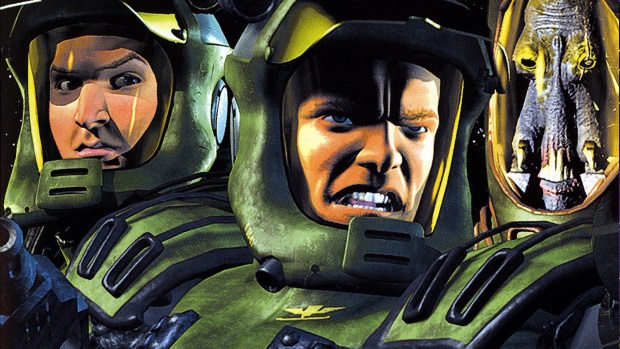
Based On: Starship Troopers
The original Starship Troopers novel by Robert Heinlein has been interpreted as (and criticized for) being too militaristic and rife with questionable politics. That’s another debate for another day. Regardless of where the story’s viewpoints align, it isn’t the type of literature that’s associated with your average school’s reading curriculum.
Paul Verhoeven’s 1997 film adaptation poked fun at the novel’s ideology, and the director didn’t pull any punches when it came to depicting gung-ho violence and excessive carnage. This was only fitting for a movie about soldiers killing bugs real good, though.
further reading: The Use of Ads in Starship Troopers, Total Recall, and RoboCop
Roughnecks, meanwhile, is more inspired by Heinlein’s vision than Verhoeven’s, albeit watered down and stripped of the political overtones. The CGI-animated spin-off follows Johnny Rico as he leads the Mobile Infantry on missions to thwart the space bugs. Gone is the humor that makes the movie so enjoyable, but the series has garnered a strong following among fans of the book, who even campaigned for its eventual DVD release.
This wasn’t the first cartoon series to stem from an R-rated Verhoeven movie, either. In 1988 and 1998 respectively, Robocop received two spin-offs in the form of Robocop: The Animated Series and Robocop: Alpha Commando (which we wrote more about here).
The Mummy: The Animated Series (2001-2003)
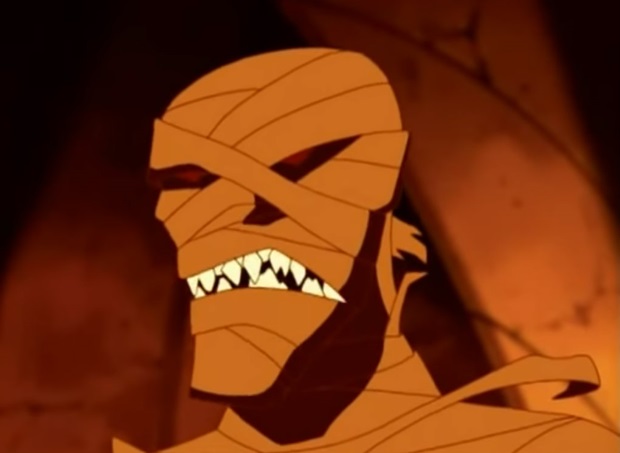
Based On: The Mummy, The Mummy Returns
Of all the horror franchises out there to inspire their own children’s cartoon, Universal’s Indiana Jones-esque reboot of The Mummy is tame compared to some. The saga balances its scares with action-packed spectacle, spirited adventure, and protagonists whose sense of humour remains intact when confronted with supernatural threats. If you grew up in the 90s and early 2000s, chances are you convinced your parents to let you watch these flicks without too much hassle.
At the same time, the films also contain their fair share of intense moments deemed inappropriate for young audiences – such as adultery, naughty words, light violence, scantily-dressed Egyptian queens, nightmare-inducing creepy crawlies, and general spooky shenanigans. But when you take the basic premise of the movies – not to mention their success – it’s easy to see why someone felt a cartoon spin-off would work.
further reading: 13 Essential Mummy Movies
The Mummy: The Animated Series follows the O’Donnell family as they try to evade the evil Imhotep, his undead legions, and other creatures – such as bird-like creatures who can enslave men through the power of song. You see, their son Alex has found himself in possession of the Manacle of Osiris, and Imhotep wants it badly. This leads our heroes on a globetrotting quest to rid their son of the unwanted shackle and hopefully put a stop to the forces of evil.
Like the films, the kids’ show was action-orientated and rooted in fantastical adventure. These elements lent themselves perfectly to series aimed at younger viewers with overactive imaginations, and it was a lot of fun while it lasted. In fact, The Mummy: The Animated Series is still a fine way to spend a Saturday morning if you ask me.
Little Shop (1991)
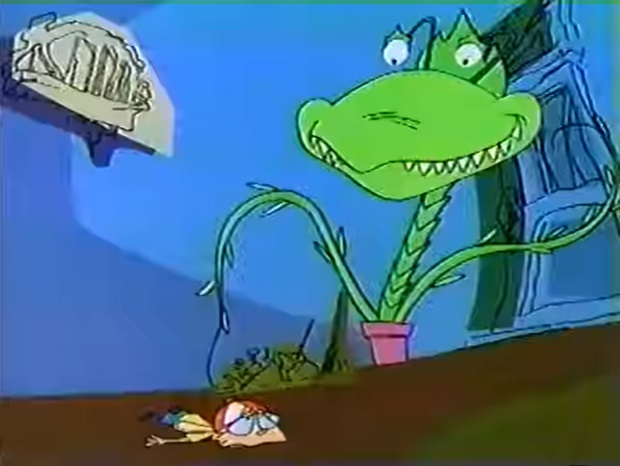
Based On: The Little Shop Of Horrors
Like most Roger Corman productions, The Little Shop Of Horrors was made quickly and cheaply. Shot over two days, the schlocker about a man-eating Venus Fly Trap introduced 60s audiences to a young chap named Jack Nicholson (who went on to do quite well for himself apparently). The caper also inspired a superior 1986 remake that boasts some rather catchy musical numbers.
But no one ever talks about the short-lived 1991 cartoon these days. Corman returned as a creative consultant, but the cartoon was clearly more enamored with the 80s musical as it contained some funky jams as well.
The animated series brought back Seymour and Audrey as the main characters, only in this version of the story they’re teenagers. The plant, Junior, was also reimagined. Instead of feasting on human blood, the Venus was content to eat regular meat. He also used his hypnotic powers to help people from time to time, though he was prone to eating the odd piano teacher. Oh, and did I mention that the plant was a rapper? That’s right – whenever it was time for a musical number, he’d spit some bars. Word up.
The major downside to Little Shop was the animation. To be honest, it just wasn’t up to scratch and looked extremely dated, even compared to cartoons released in the years that preceded it. However, despite the technical inadequacies, the series has its merits. The songs were a genuine hoot, and the show is rather charming in its own little way.
The Cartoon Adventures Of Teen Wolf (1986-1988)
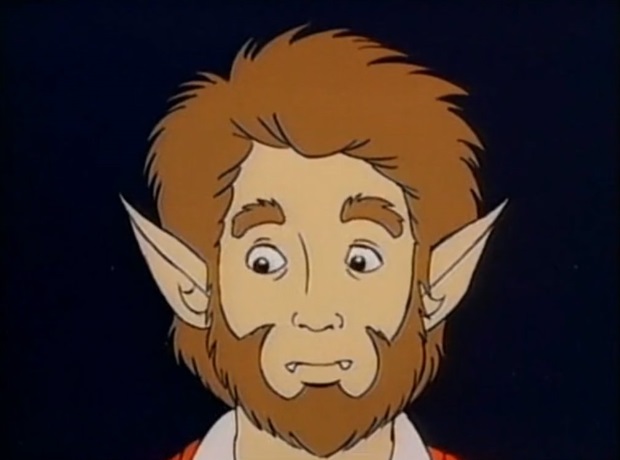
Based On: Teen Wolf
Calling Teen Wolf a horror movie is a bit of a stretch to be fair. However, you could argue that it belongs to the same cinematic lineage of teen monster movies such as I Was A Teenage Werewolf and Full Moon High. The film also explores the parallels between monstrous transformations and puberty, a theme that was explored in a more horrific detail in fellow werewolf-themed cult classic Ginger Snaps.
If anything, Teen Wolf is like an anti-horror movie. Instead of giving in to his inner beast and becoming violent, our adolescent lycanthrope learns to control the pooch that dwells within him and embrace his individuality. It’s a feel-good story with a positive message, but with all the bad language, sex and drug references, and dangerous van surfing, the movie isn’t exactly appropriate for uncorrupted minds. Fortunately, that’s where the cartoon came in.
further reading: 13 Must-See Werewolf Movies
Released one year after the movie, the show’s story takes a different approach to its cinematic predecessor. Here, our wolf chooses to keep his supernatural identity a secret from the town out of fear of being stereotyped and stigmatised. Despite the protagonist’s secrecy, however, the show did reinforce the positive message about loving ourselves and being excellent to each other. Perhaps more so than the movie…
The Cartoon Adventures Of Teen Wolf is a forgotten gem of show that oozes of charm thanks to its slapstick humor, warm-hearted nature, and acceptance of Otherness. While the movie and the successful MTV series have overshadowed the show’s existence somewhat, that doesn’t make it inferior by any means.
Operation: Aliens
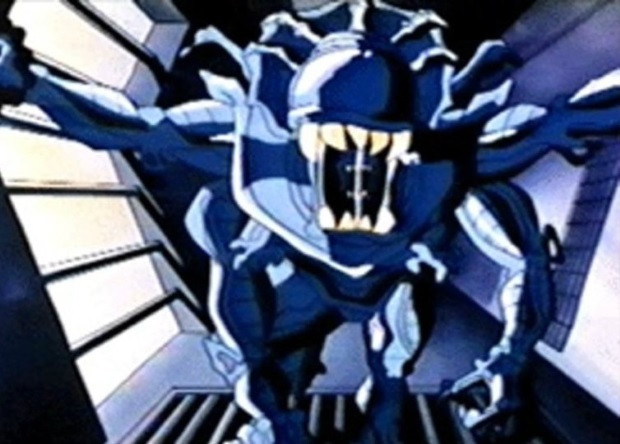
Based On: Aliens, Alien 3
Unlike the other shows mentioned on this list, Operation: Aliens never had the luxury of making it to television in the end. But it was allegedly in development back in the early 90s. Following the success of Star Wars and its popular toyline, manufacturer Kenner sought to license the rights to the Alien franchise and market products based on it to children. Thus, the idea for a Saturday morning cartoon to coincide with the release of complementary paraphernalia was conceived.
further reading: The Weird Marketing of the Alien Films
Little is known about Operation: Aliens. According to lore, a pilot was produced by an unnamed Korean studio, and there are stills available online to suggest that some footage was shot. The rumour mill also claims that only a handful of people ever saw that footage. The rest of us can only imagine what the experience must have been like.
Reasons for the cartoon’s cancellation were never specified, though rumor has it the disappointing response to Alien 3 had something to do with the powers that be pulling the plug. Of course, it is also worth bearing in mind that the show’s target audience shouldn’t have been watching the Alien flicks in the first place, therefore, the tepid response to David Fincher’s sequel shouldn’t have been a factor. Other rumors suggest that the material was too dark, violent, and impossible to make accessible to kids. The truth is out there waiting to be exposed once and for all!
The toyline was still produced until 1995, with four series being released in that time.
Swamp Thing (1991)
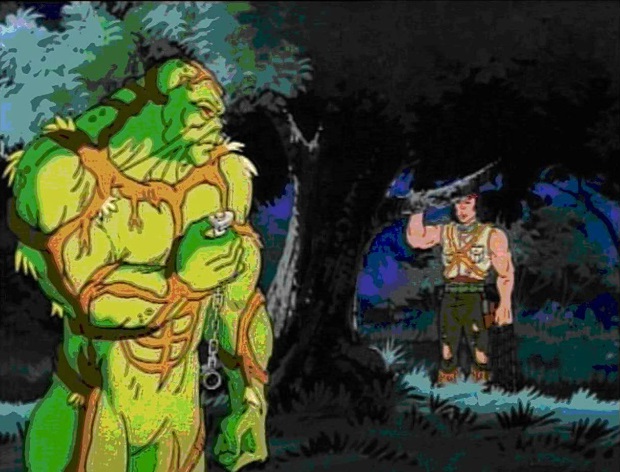
Based On: Swamp Thing
The release of Wes Craven’s Swamp Thing adaptation in 1982 prompted DC Comics to resurrect the character. Craven’s movie was an initial box office failure, but it became a staple of cable television throughout the years and gained a strong cult following as a result. A low-budget sequel, Return Of Swamp Thing, was released in 1989, which, despite being wildly entertaining, didn’t exactly give Swampie the screen portrayal he deserved.
Swamp Thing’s onscreen adventures continued through a live-action television series which aired on the USA Network from 1990 to 1993. At one point, Swamp Thing was the network’s highest-rated show. Shortly after, a cartoon series was produced depicting the half-man, half-plant horror anti-hero as a kid-friendly, environmentally-conscious superhero.
The cartoon saw Swampie and his pals Bayou Jack and Tomahawk protect the environment from the dastardly Anton Arcane and his gang of Un-Men. The show was short-lived, with only five episodes ever airing. That’s a shame, as Swamp Thing had the best opening credits theme song ever – a riff on Chip Taylor’s “Wild Thing,” albeit with the lyrics changed to revolve around the swamp monster of the hour.
Despite the cartoon’s limited run, it still spawned two video games, action figures, and some cosy slippers. At least upset viewers had warm feet to help them deal with the harsh, cold reality of living in world with no more Swamp Thing cartoons look forward to.
Tales From The Cryptkeeper (1993-1999)
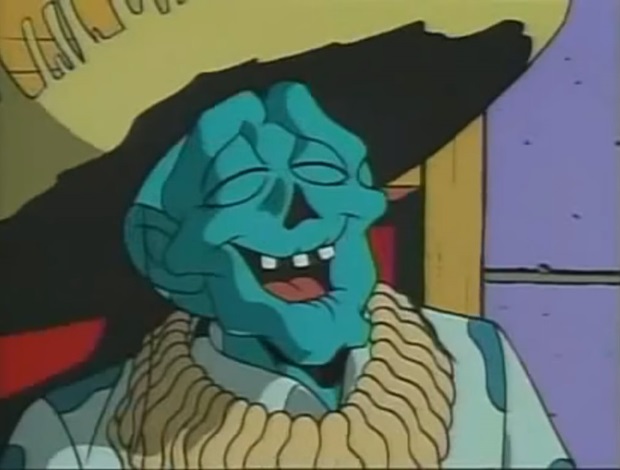
Based On: Tales From The Crypt
EC Comics tales and HBO’s live-action Tales From The Crypt anthology series might be gruesome, but the Crypt Keeper has always lured children to the darker side of entertainment. For a start, EC Comics was partly responsible for inspiring Fredric Wertham’s Seduction of the Innocent, a crusade against comics published in 1954 that claimed these stories were to blame for juvenile delinquency and societal wrongdoing.
Then we have the Crypt Keeper himself: with his wicked sense of humour, untouchable pun game, and utterly charming decomposed appearance, he’s always been an icon of fright for all age groups. It was only a matter of time before he made the jump to children’s television and repackaged his spine-tingling stories for the Saturday morning masses.
Tales from the Cryptkeeper was spawned following the success of Tales From The Crypt. Like its parent series, the animated offspring often adapted stories from the vaults of EC Comics, on top giving other well-known horror tales a watered down makeover. As far as childish horror yarns go, this one embraced the horror elements more than most. You can revisit some of the most spooktacular episodes here… if you dare. Mwahahahaha.
It’s also worth remembering that the Crypt Keeper had his own game show called Secret Of The Cryptkeeper’s Haunted House. This was an insane concept, but it just goes to show how far they went to market the undead mischief-maker to adolescents in the ’90s. The game show was even nominated for an Emmy, but it lost out to The Price Is Right.
The Real Ghostbusters (1986-1991)

Based On: Ghostbusters
We’ve already looked at the spookiest episodes of The Real Ghostbusters and discussed how messed up the show was. Not only was RGB an excellent cartoon spin-off of the iconic 1984 film, but it also served as a thrilling continuation of Peter, Ray, Winston, and Egon’s exploits.
While the original gang returned to the fold to continue the good fight against the forces from beyond, new actors adopted the monikers. Interestingly, Lorenzo Music, famous for voicing the cartoon cat Garfield, played Peter in the show. Some years later, Bill Murray, who starred as Peter in the live-action Ghostbusters movies, voiced Garfield in the 2004 film.
The beauty of the cartoon, however, was how it established the eponymous heroes as a long-term team that faced off against a variety of supernatural wonders. The films never really got to fully realize their mythological potential. RGB drew inspiration from a variety of sources – Lovecraft, Norse mythology, an abundance of creatures, etc. – and unleashed myriad fantastical and fearsome foes. Fan-favorite Slimer also featured significantly, chumming up with the team and eating anything and everything that was edible. Who ever said the living and the dead couldn’t co-exist?
In 1997, another spin-off series titled Extreme Ghostbusters was released. This one chronicled the adventures of Egon Spengler and his younger proteges. Unfortunately, Extreme Ghostbusters wasn’t as well-received as its predecessor and ended after one season (but we make the case that it’s better than you remember).
Beetlejuice: The Animated Series (1989-1991)
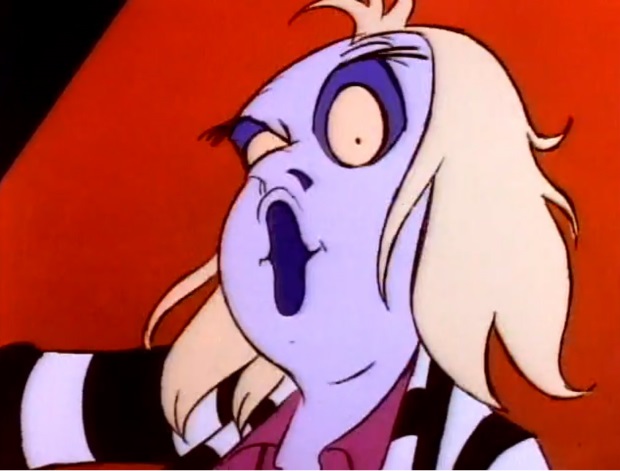
Based On: Beetlejuice
One year after Tim Burton unleashed his horror-comedy about the ghost with the most, Warner Bros. decided to bring the Neitherworld to the small screen and treat younger viewers to some quirky supernatural escapades.
The cartoon is every bit as weird and zany as Burton’s movie, but the tone is much sweeter and the Beetlejuice character is lovably obnoxious as opposed to being an infuriating deviant determined on banishing innocent ghosts from their own home. Here, Lydia and Beetlejuice are good mates who embark on adventures through the Neitherworld together. Along the way, they encounter all sorts of wacky creatures who inhabit the realm.
further reading: The Craziest Episodes of the Beetlejuice Animated Series
Beetlejuice was so well-received that everyone wanted a piece of the action. The series was notable for being one of the first shows to be shown on two different networks simultaneously. New episodes premiered on ABC, while reruns aired on Fox. On top of being a critically-acclaimed hit, the show also won an Emmy for Best Outstanding Animated Program.
Continuing with the trendsetting, the show was also one of the earliest cartoons to combine traditional animation with CGI. According to animator Michael Hirsh, this was done because Burton wanted the show to follow in the movie’s footstep by including mixed media. As he told Syfy Wire, “”He wanted to have an element of that in the series so we came up the idea to use some early CGI to capture that flavor.”
Toxic Crusaders (1990)
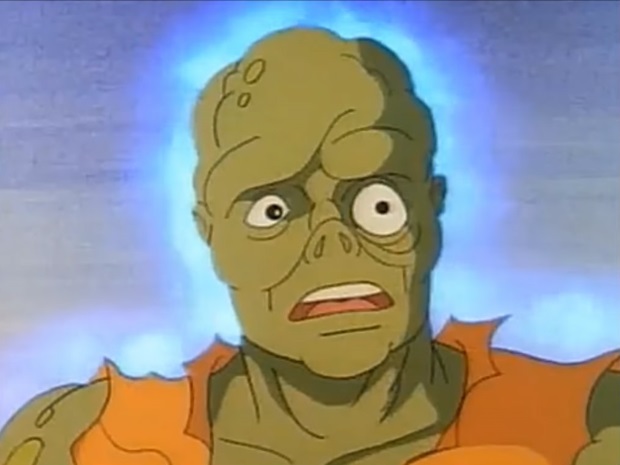
Based On: The Toxic Avenger
The legacy of Troma Entertainment isn’t exactly synonymous with children’s programming. The independent company, led by the maverick huckster Lloyd Kaufman, specialises in micro-budget exploitation movies that revel in gore, sleaze, depravity, and politically incorrect humor. They’re a lot of fun, but they’re not for everyone – especially not children.
The Toxic Avenger franchise defines what Troma is all about and then some. In the first movie, there’s a scene where a group of punks are out driving and decide to run over a young boy riding his bike. The purpose of this scene is to make viewers laugh, and because of the film’s unabashed desire to shock and appal, it succeeds in that regard. Either you’re in on the sick joke or you’re repulsed by it. Either way, Troma has won.
further reading: A Brief History of the Toxic Avenger Franchise
The fact that the studio produced a kids’ cartoon based on their deformed poster boy should be mind-boggling, but this kind of unpredictable insanity has always been the lifeblood of Troma. Despite being aimed at children, Toxic Crusaders still feels like an authentic product of the studio, despite being a rare foray into children’s entertainment. Nothing Kaufman and co. does should ever surprise us.
The series was created to cash in on the wave of environmentally conscious cartoons that were popular in the 80s and early 90s, such as Captain Planet. After all, who was more fitting than Toxie – a mutant superhero born from exposure to toxic waste – to save Tromaville from pollution? The decision to team Toxie up with a team of mutant crusaders was based on the popularity of Teenage Mutant Ninja Turtles, itself a kids’ cartoon based on edgier source material.
Of course, in true Troma spirit, Toxic Crusaders still pushed the envelope in terms of what was acceptable in a kids’ show. The studio’s dark heart and demented sense of humour is still vibrant throughout all thirteen episodes, albeit toned down compared to movies which feature dead children as punchlines to sick jokes. You get the impression that Troma was out to make a mockery of the cartoon/mass merchandising boom while simultaneously trying to milk it for their own gain. Toxic Crusaders failed to light the world on fire, but we should just be happy that a show like this exists and can be owned on DVD.